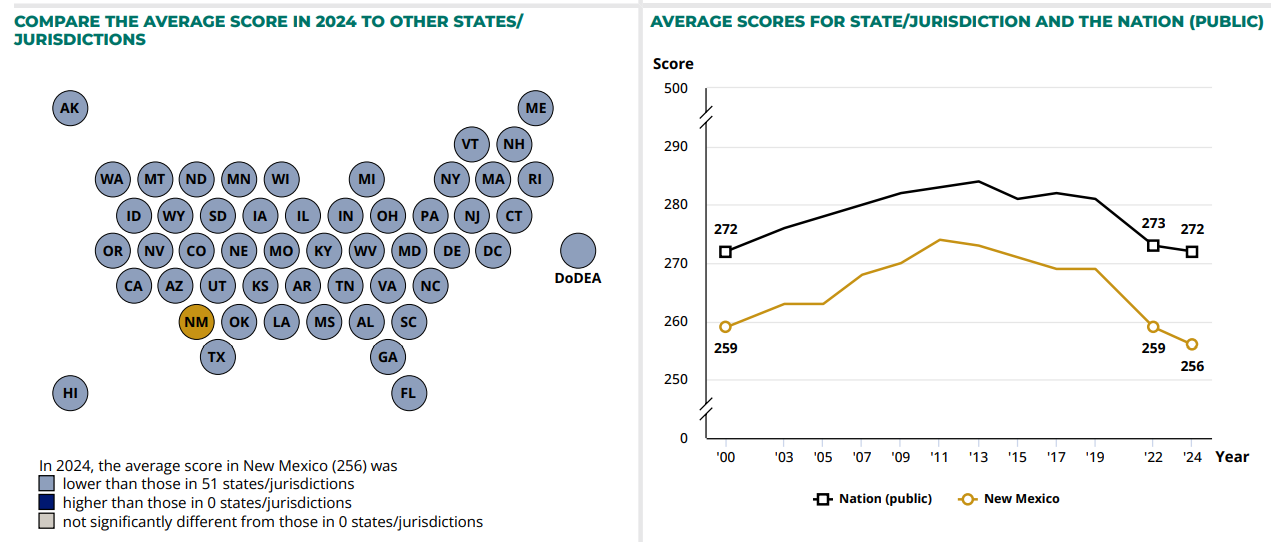MLG claims mantle of education reform?
02.07.2025
To say that Gov. Lujan Grisham’s education policies have failed would be a massive understatement. Look no further than New Mexico’s abysmal (worst in the nation) education results in the last TWO National Assessments of Educational Progress.
With time ticking on her time in office as Gov. Lujan Grisham seems to be pivoting towards attempting to be an education reformer. This has certainly NOT been the case where she has never lifted a finger to push Mississippi-style education reforms or broad-based school choice (we’d welcome a move to that end). But check out these quotes from a recent Albuquerque Journal story (items in parentheses are RGF comment):
On the issue of public schools, Lujan Grisham expressed frustration about what she described as a lack of transparency in how more than $4 billion in state funding is spent, saying it’s up to local school boards to decide how dollars that flow through the state’s funding formula are put to use. (interesting tactic to shift blame to local districts)
“I have no power over schools, in the same way I can’t tell judges what they should sentence nor can I tell a police officer who to arrest,” Lujan Grisham said. (again, simply untrue)
She also claimed the House and Senate education committees, which are both led by current or retired teachers, have effectively bottled up many education initiatives in recent years.
“You’ve got a lot of former educators and superintendents who aren’t interested in changing anything,” she said.
Specifically, the governor called it “unethical and a huge conflict of interest” for current and former educators to be voting on education funding and other initiatives as legislators. (these are absolutely true statements, but also the FIRST time we have seen the Gov. publicly criticize members of her own party for their approach to education).






















